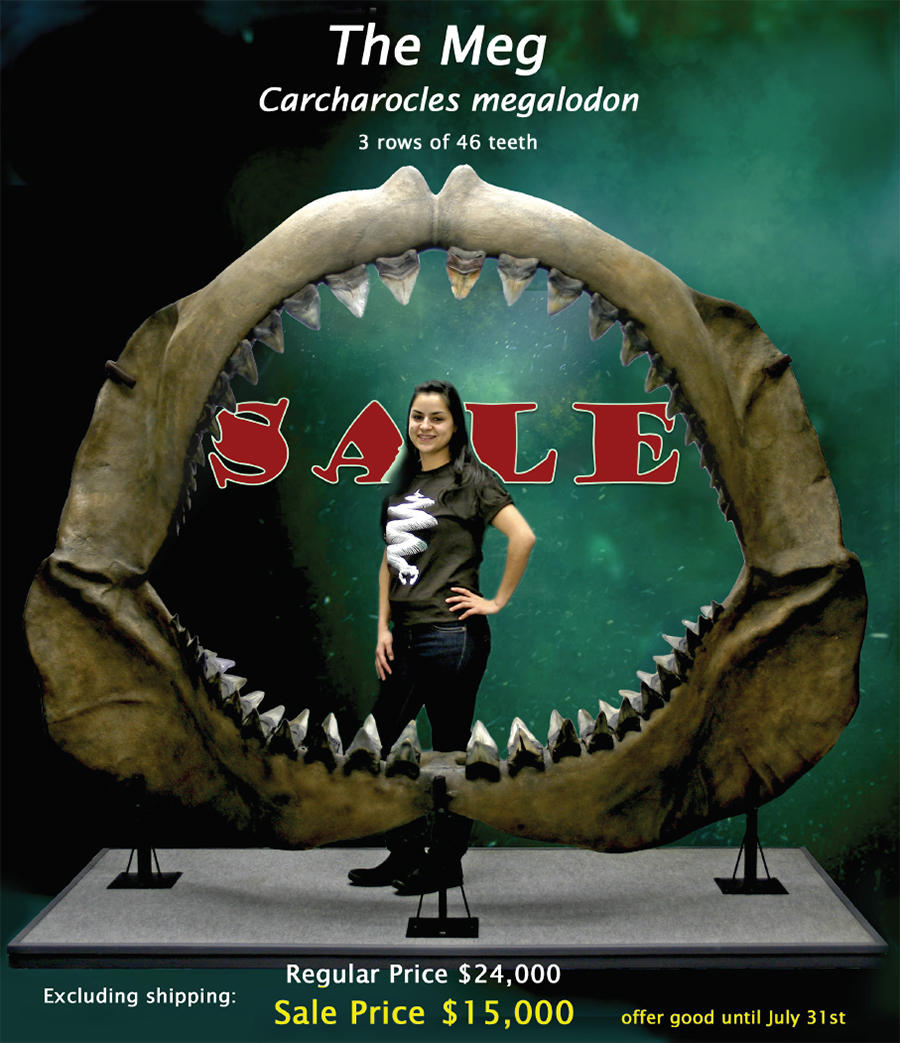
April-May 2018 Newsletter
Featured Category: Paleontology
Fossils: Ice Age 2mya • Megalodon Shark 17mya
|
April - with Earth Day behind us, we thought we'd focus attention on the fossilized remains of extinct animals, particularly fossils from the Ice Age. The fossil record helps us in analyzing the animals themselves and the possible causes of their extinction. Our collection of paleontological material began in partnership with the Natural History Museum of Los Angeles County, in the form of an impressive Smilodon fatalis skull. Since then, we have obtained specimens from multiple sources including the Babiarz Institute of Paleontological Studies. Our fossil specimens span from as long ago as two hundred million years (Whorl Tooth Shark and Cynodont) to as recently as twelve thousand years ago (Woolly Mammoth and Bison), and includes fossil mammals, birds, sharks, dinosaurs & reptiles, and many Ice Age specimens.
|

|

|
|
The last ice age, a period called the Pleistocene in which ice covered over a third of the earth, began approximately 1.6 million years ago and ended about 11,000 years ago. During this time Homo sapiens evolved, co-existing with large mammals, dubbed mega-fauna. Other mammals, birds, crocodiles, lizards, turtles, and other reptiles also flourished.
About 13,000 years ago, the earth experienced an extinction of megafauna. The cause of this extinction event is still debated, and scientists continue their research into extinction hypotheses such as climate change, scarcity of food, human activity, an impact by an extra-terrestrial object, like a comet, or a combination of factors.
One of the richest sources of insect, plant and animal remains from the Pleistocene Epoch can be found at the La Brea Tar Pits in Los Angeles. Several of our specimens are licensed through NHMLA from their collection, including our first paleontological skull, and the skeleton of a saber-toothed cat.
|
|

|
|
The Megalodon Shark
One of the largest predators in vertebrate history
|
|
We are fascinated by sharks. The stealth, ferocity and power which make the shark an apex predator in oceans - itself a mysterious medium - ignites our imagination. Sharks have been feared and revered though history, as gods in ancient origin stories, and as implacable natural-world villains in contemporary novels and movies, as subjects of docu- and mocku-mentaries featured in popular blocks of programming (shark week anyone?). Modern sharks are now a focus of research and conservation efforts to ensure that these not-so-fuzzy vulnerable species do not become extinct, like their relative and largest of any known shark species, the megalodon shark.
The idea that an animal long thought to be extinct could be re-discovered, living, (as happened in 1938, when a living coelacanth was found in waters near South Africa) is the premise behind the upcoming movie “The Meg,” anticipated to release in August. Only in this case, the animal in question is one of the most powerful predators that ever lived.
For a limited time, we are offering our Meg Jaw on sale at a greatly reduced price. It dwarfs the modern great white shark jaw (also available) at a height of 6 1/2 feet tall and width over 8 feet, and it boasts 3 rows of 46 teeth. This is one impressive photo-op for your aquarium, natural history museum, or ...?
|
|
Until next time...
|
All images and text © 2018 Bone Clones, Inc.
|
|